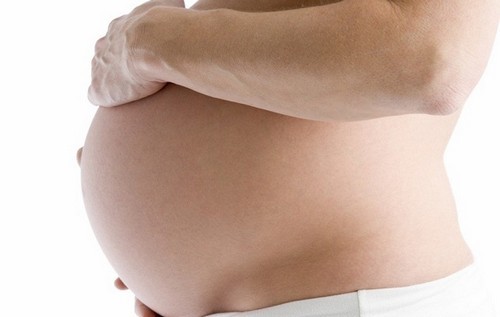Starting from the 38th week of pregnancy, the fetus in the womb fully ripens, all its organs and systems are ready for independent work. That is why the period from 38 to 42 weeks is an ideal time for the birth of a child. However, in some cases, childbirth occurs prematurely.
What is the danger of preterm birth, how they begin and what measures must be taken to maintain the health of the baby and mother?
Preterm birth is a birth that occurs between 22 and 37 weeks of gestation. The number of such births around the world is about 6-9%. In this case, preterm birth is usually divided by the duration of pregnancy, since there is a huge difference between a child who was born at 29 weeks and born at 34 weeks of pregnancy.
Which births are considered premature?
Meanwhile, in both of these cases, labor will be considered premature.
- preterm birth at 22 – 28 weeks are classified as very early, since the weight of the child during this period ranges from 500 g to 1 kg;
- early preterm birth occurs between 29 and 33 weeks. The mass of the newborn is about 2000 g;
- premature birth for a period of 34 to 37 weeks. As a rule, during this period of time, a child is born with a body weight of about 2500 g.

According to statistics, the majority of preterm births (up to 60%) occur at 34–37 weeks of gestation, and up to 30 weeks this happens much less frequently. Until 1993, births in our country were considered premature, which began no earlier than 29 weeks of pregnancy, and resuscitation was taken only for those newborns whose weight reached 1000 g. However, later new criteria recommended by WHO were introduced in the Russian Federation.
Now, all infants born over 22 weeks old and having a body weight of at least 500 g are required to provide intensive medical care. It should be noted that newborns with very low weight (up to 1000 g) should be registered at the registry office only if they have lived more than 7 days (168 hours). If the fetus died during this time,
Causes of Preterm Birth
There are a number of factors that cause preterm delivery. The causes leading to miscarriage are divided into two groups.
1. The health of the expectant mother
This includes endocrine diseases leading to dysfunction of the ovaries, thyroid gland, adrenal glands, pituitary gland, and pancreas. These diseases can cause a decrease in the hormones responsible for bearing a pregnancy. Also, for the normal course of pregnancy, the general physical health of the expectant mother is very important. If a woman suffers from heart disease, there are problems with the liver or kidneys, then the body begins to perceive pregnancy as a risk to life. And as a result, the threat of premature birth arises.

Another reason for miscarriage is the anatomical changes in the organs of childbearing. Uterine underdevelopment (infantilism), abnormalities of the uterus (one-horned, with septum, two-horned), as well as various tumor processes, scars after cesarean section, trauma during artificial abortion – all this can provoke a premature birth. Of particular importance is isthmic-cervical insufficiency (ICI) – a pathological change in the cervix, in which, as pregnancy develops, it loses its ability to hold the fetus in the uterine cavity. An ICI is rarely congenital, most often it develops as a result of ruptures and injuries of the cervix during artificial abortions or complicated births. In some cases, ICI is formed with hormonal disorders in the body of a woman, for example, with an increase in male sex hormones in the blood.
The presence of infections in the body of a woman also plays an important role. First of all, this applies to diseases of the genitourinary system: inflammation of the uterus, appendages, ovaries, bacterial vaginitis. Hidden infections that did not appear before pregnancy are a big threat: mycoplasmosis, chlamydia, urethroplasmosis, trichomoniasis, herpes, staphylococcal, streptococcal and cytomegalovirus infections. In addition, the presence of other acute or chronic diseases, such as viral hepatitis, tonsillitis, caries, often leads to serious complications. The main danger is that the infection can penetrate into the amniotic membranes, thereby causing intrauterine infection of the fetus.
2. The course of pregnancy
Some complications of pregnancy can provoke preterm delivery:
- severe gestosis, threatening the life of the mother and child;
- placental insufficiency, characterized by impaired delivery of nutrients and oxygen to the fetus;
- detachment or premature aging of the placenta;
- incorrect position of the fetus (pelvic, transverse, oblique);
- overstretching of the walls of the uterus with multiple pregnancy or polyhydramnios;
- placenta previa;
- rhesus conflict;
- woman’s age.
Often the cause of abortion is the abnormal development of the fetus (mutations, genetic diseases, defects). Also a provoking factor is poor nutrition, hard physical labor, stress, bad habits (alcoholism, drug addiction, smoking).
Features of preterm birth at different stages of pregnancy
Premature birth at very early stages (22 – 29 weeks) is often caused by ischemic-cervical insufficiency, infection in the membranes and premature discharge of amniotic fluid. Childbirth up to 30 weeks is the most dangerous and having the most serious consequences for the baby. Such babies are born with critically low weight (less than 1000 g) and are often not viable. They cannot breathe on their own, because the lungs at this period do not have time to fully develop. Unfortunately, many crumbs subsequently have serious health problems (cerebral palsy, deafness, blindness).
To date, there is information about babies born in the early stages (22-23 weeks) who survived after resuscitation. However, the further prognosis for such children is extremely unfavorable. As a rule, they are all deeply disabled with severe lesions of the central nervous system.
Early childbirths for a period of about 30 weeks can provoke various factors: incompatibility of the fetus and mother by the Rh factor or blood group, as well as other pregnancy pathologies. The weight of these newborns varies from 1000 to 2000. Despite the fact that their organs are not fully mature and work extremely unstable, with the help of modern drug treatment, doctors manage to achieve excellent results. Most children born between 28-34 weeks later lead a full life.
Delivery at 34-37 weeks can be caused by hormonal imbalance, placental insufficiency, stress, trauma or chronic diseases of the heart, kidneys, lungs. For children born at this time, the prognosis is the most favorable. Their weight is approximately 1800-2500 g. Moreover, such babies are already quite ready for life outside the womb, but subject to special care.
Stages of preterm birth
There are several stages of childbirth: threatening, beginning and active labor. This separation helps to determine whether it is still possible to wait and thereby prevent the early birth of the baby. Therefore, the first signs of premature birth should not be left without attention of specialists.
With threatening preterm birth, aching, pulling pains in the abdomen or lower back, accompanied by tension of the uterus, are observed. A woman herself can feel slight contractions of the uterus, while the fetus begins to move actively. In addition, minor spotting from the birth canal may appear. Having discovered the first signs of premature birth, the expectant mother should immediately consult a doctor!
Beginning childbirth is characterized by severe, cramping abdominal pain, discharge of the mucous plug or the presence of red blood discharge. Amniotic fluid may also leak or spill. During the study, the doctor discovers an opening of the cervix, opening by 1-2 cm, while shortening occurs. Thus, all the signs characteristic of the onset of natural labor are appearing.
With the onset of labor, the symptoms are more pronounced: contractions become regular and strong, the uterine pharynx opens 2-4 cm or more. There is a rupture of the membranes, after which the present part of the fetus moves into the small pelvis.
Common complications
Spontaneous abortion is often accompanied by various complications. This may be an abnormal labor: excessive, leading to rapid childbirth, as well as weak or discoordinated labor. In case of placental insufficiency or with early aging of the placenta, fetal hypoxia of varying severity can occur. Such childbirth must be carried out under cardiomonitor control (CTG).
Preterm birth often has complications in the form of rupture of the amniotic membranes, which leads to an early outflow of water. Amniotic fluid protects the fetus from various infections, injuries, in addition, play a crucial role in metabolism. Therefore, it is important to timely detect rupture of the membranes. If transparent vaginal discharge appears, consult a doctor. It is quite difficult to diagnose such a complication, since the cervix is not fully opened, and it is almost impossible to determine the integrity of the bladder during visual examination. In this case, special tests can be carried out to determine water leakage. Also, for the diagnosis, ultrasound and analysis of vaginal discharge are used.
With an early rupture of the membranes and the absence of vigorous labor for less than 34 weeks, the woman is under the close supervision of doctors. After all, every hour spent in the womb increases the viability of the baby. The expectant mother must take a series of tests daily and undergo special therapy that stimulates the maturation of the fetus. At the first symptoms of inflammation of the amniotic membranes, labor is stimulated, otherwise not only the life of the child, but also the woman in labor is exposed to danger.
How to avoid early birth?
If childbirth has already begun, it is unlikely to stop them. Therefore, women who have found a threat of premature birth are placed in a hospital. Doctors determine the cause of miscarriage, determine the weight of the baby, conduct a series of tests for possible infections. For the future mother, physical and emotional peace is very important, therefore, pregnant women are often prescribed drugs with a sedative effect (tincture of valerian or motherwort). Spasmolytic agents that have a relaxing effect on the uterus (Baralgin, No-shpa) can also be used.

In addition, therapy is aimed at eliminating the disease, which is the cause of early childbirth. So, with isthmic-cervical insufficiency, sutures can be placed on the cervix, however, at a later date (after 20 weeks) the obstetric pessary is usually used – a special ring worn on the cervix. With fetal hypoxia caused by placental insufficiency, special preparations and vitamins are used, and a course of antibiotics is prescribed when a foci of infection is detected.
It is imperative even before pregnancy to think about how to avoid premature birth. And here prevention and timely preparation are necessary. First of all, before conception, an examination of the body should be carried out, and if any violations are detected, a full course of treatment should be taken. A pregnant woman should monitor her diet, avoid emotional shocks, be observed by a gynecologist and take the necessary tests. If there is a risk of premature birth, then during critical periods (2-3, 4-12 and 18-22 weeks) hospitalization of the hospital is recommended. When the expectant mother is healthy, and the pregnancy proceeds without pathologies, it is unlikely that she will begin a premature birth.



